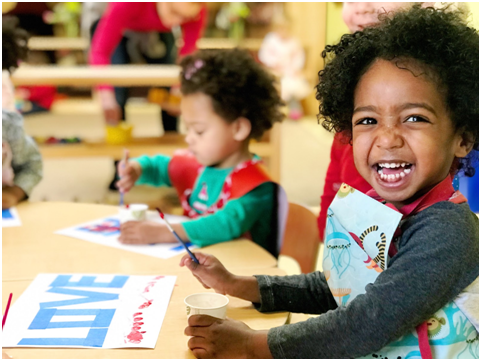I was recently asked if I had to give an “elevator speech” describing the best part about Montessori what I would say. There are SO many things that make a Montessori education special; however, if I had to narrow it down, the number one reason is its emphasis on individual development. Montessori education allows teachers to build a learning plan specially tailored to each child’s unique personality and needs. The curriculum is set. The lessons have been proven by contemporary research to work for not just some children - but every child.
Teachers don’t have to create lesson plans for a whole group every week, allowing them time to focus on each individual child. What excites them? In which areas do they need more support?
Careful, Expert Observation One misconception about the Montessori method of following the child is this means letting them do whatever they want. Parents fear that if Susie is drawn to math she will be able to sit and work on math work all day, every day, and never be taught to read or encouraged to paint. This is not the case. Montessori teachers are trained to observe each child’s interests, allow them the freedom and time necessary to practice the lessons they need, and guide them toward other areas as well when it’s time to branch out.
If a child is hesitant to visit another area of the classroom - we ask why. Are they hesitant to try writing because it’s challenging for them and they’re afraid to fail? Are they not visiting the math area because it’s simply not interesting to them?
Interest-Based Learning If the problem is interest - teachers use their powers of observation and years of preparation to decide how they can manipulate the material to draw the child in. When a child is struggling we don’t ask what is wrong with this child; rather how can we change what we are doing to engage and better support them.
In one of the Primary rooms at Suzuki we had a little boy who was OBSESSED with
monster trucks. He would smuggle them into school in his bag and spend hours, mesmerized, playing with them. Rather than become exasperated he wasn’t choosing lessons in math or language - the teachers observed his infatuation and used it. They adjusted a counting lesson by switching out spindles with monster trucks so the child wanted to practice learning numbers because now, it was something he was interested in.
Children Learn at Different Rates An authentic Montessori environment allows for the fact that different children learn and develop at different rates. For this reason you will find Montessori schools have multi-age classrooms. Some children are working on reading chapter books, while others are learning their letter sounds. Multi-age classrooms teach children at a young age that it’s okay to be working on different things at different rates. This sense of community (rather than competition if everyone is the same age, working on the same things) fosters opportunities for leadership, collaboration and teamwork,
Different Materials for Different Learners Different children learn in different ways. Montessori materials account for this. Children learn letter sounds by tracing Sandpaper Letters - getting kinesthetic, visual, and auditory input. Some teachers even incorporate purposeful movement for children whose brains work best when their body is busy. All Montessori materials are intentionally hands-on, ensuring that all learners have the opportunity to process the concept. There are also several lessons that teach the same concept to ensure at least one will appeal to the child’s individual interest and needs. Montessori materials ensure that every child’s unique learning style is honored, rather than choosing one lesson plan that is meant to meet the needs of 25 different children at the same time on the same day.
Why It Matters Every child has a natural desire to learn. If you observe an infant taking in his environment it’s clear that children are scientists - constantly making and testing hypotheses in their interactions with the world. When we honor the fact, as authentic Montessori schools do, that children learn best when they are interested in what they’re learning, given the space and freedom to develop at their own rate, and learn in different ways, we raise capable people with a strong sense of self, a desire for exploration and innovation, and a lifelong passion for learning.
“If a child can’t learn the way we teach, maybe we should teach the way they learn.”















